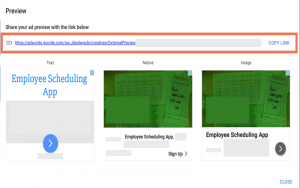For small businesses, developing a brand means working from scratch to piece together a cohesive and inspiring representation of their business. Once a business is up and running, it can be daunting to think of rebranding. You put a ton of time, effort, and resources into perfecting your brand, its imagery, and tone of voice. Yet, given how quickly audiences and industries are evolving, in order to stay relevant, businesses of all sizes must continually innovate and rebrand.
There is good news, though! Rebrands do not equal starting from scratch and forgetting everything you designed for your initial brand. A rebrand does not mean your business is failing, but rather indicates that your business is aware of its competition, market, and audience preferences and wants to stay up with the times. It can also incorporate slight changes, instead of total overall, such as realigning your brand promises.
To best determine if you’re in need of a rebrand, check to see if the business is encountering or about to encounter any of the following opportunities:
- Your initial brand is outdated – your look and tone were great when you initially launched the business, but the brand hasn’t changed with the times and is no longer a match for your current offerings.
- The business is ready for a growth spurt – your business is booming and you’re ready to take its visual image to the next level. You’re ready to be out of launch mode and want to present your company as a thriving, growing business.
- Your target audience has shifted or broadened – your business has greater or different appeal than when it started, and you’re in need of a new way to position the business in order to engage your new or larger target audience.
- Your target market is growing and the business is at risk of losing relevancy and competitive advantage – your industry is growing and new businesses are popping up more quickly than you had expected. Take this opportunity to rebrand so you retain your market share by maintaining your loyal audience despite the increasingly competitive marketplace.
After you’ve decided a rebrand is needed, use these guidelines to keep you on track:
Cement your brand promises
Your brand promises are how you communicate your uniqueness to the public; why they should buy from you instead of a competitor. If you haven’t ironed out your brand promises yet, this is a great opportunity to do so. If you have brand promises in place, revisit them and ensure they are still in alignment with your long-term strategy. Companies grow and evolve, and sometimes they need to reconstruct their brand promises. This is the time to do so. Nailing down longstanding brand promises is essential for building a reputable and reliable brand. They are the guiding principles for your entire business.

image courtesy of Forbes
Examples of companies with strong brand promises are BMW, Apple, and Walmart. BMW has become synonymous with the phrase “The ultimate driving machine,” while Apple coined “Think Different” as their primary brand promise, and Walmart’s “Save Money. Live Better.” message has succinctly reinforced the company’s ultimate brand promise. These are the kinds of associations and long-term promises you want to create for your business.
Gather customer feedback and assess what’s not working
If this is your first time rebranding, how do you know where to begin? Asking the right questions to inform your new brand is a big undertaking. Luckily, Miles Herndon did the hard work for you and compiled six areas and questions you must answer while in the rebranding process.
- Your current customers’ wants, needs, and opinion on your company
- Your company’s current brand assets
- Your competitors’ products, services, and public sentiment
- Your employees opinion of the company and its brand
- What lost prospects think of your company and its brand
- What community and thought leaders think of your company and its brand
Once you’ve gathered your customer data and evaluated what’s not working for your business, you can hone in on the changes you want to implement. With this data, you can objectively state your current brand identity and public perception, and determine what you want the new or improved identity to be.
Create a story
Storytelling has become a requirement for any successful business. Consumers no longer easily adopt a brand and become loyal customers just because they have a flashy logo. Brands must work to entice, engage, and convert their audience into customers through storytelling. A brand with a provocative story holds its audience’s attention and drives growth. People are interested in the story and will revisit it because of that curiosity. Businesses with the greatest success have incorporated human experiences into their brand story where the tale includes their values, ethics, and culture.
Your story should tie into your brand promises. It is meant to inspire and motivate your internal and external audiences. Highlight what’s different about your brand from the competition. What was the catalyst to start the business? TOMS Shoes is a prime example of a business with a strong brand story, which ultimately led to its exponential growth. Blake Mycoskie, the founder, “witnessed the hardships faced by children growing up without shoes” and “wanting to help, he created TOMS Shoes, a company that would match every pair of shoes purchased with a new pair of shoes for a child in need,” according to TOMS.com.
The mission is clear: one for one; and it makes the reader feel good. Who wouldn’t want to help a child by simply purchasing a pair of shoes for themselves? This kind of pull is generated from an authentic and genuine vision that is humanized in a story. Coincidentally, TOMS has grown its mission and expanded to other offerings for those in need, and the company has thoughtfully integrated those offerings into their brand promises. The image below encapsulates where the company came from, and how it has developed over its tenure. It is a visual representation of their brand promises. The image also speaks to how important crafting a story that is malleable over time and consistent with your brand promises is to a long-standing business.

image courtesy of TOMS
Weaving these storytelling elements into your story will lead to a successful rebrand.
Cultivate buy-in from everyone
If you are a microbusiness owner, the only person you have to persuade to rebrand is yourself. Consider yourself fortunate as getting buy-in from all relevant stakeholders takes finesse and preparation. For the other small businesses, which include a handful of employees all the way up to a Board of Directors, having every person support a rebrand is another vital piece of the process. Without everyone rowing in the same direction, the brand is destined to flop and your time and resources will have been wasted. Your new brand story will play a big part in encouraging your internal audience to believe in this new vision and trajectory.
A compelling way to garner enthusiasm and support from all stakeholders is to set their expectations. By including a few key benefits of the rebrand, everyone involved will embrace the imminent change.
- Increased motivation – everyone in your organizational structure clearly knows what the company is about, what it represents and what the overarching priorities are. It is helpful to revisit these core components of your business every so often as a refresher for all employees and have them appreciate the business’s core values. Having collective goals that everyone is working toward unifies teams and helps retain focus in a business.
- Improved positioning compared to the competition – customers are constantly looking for the best fit for their needs. By rebranding, you are building the most topical needs into your business and making that apparent to your audience. Acknowledging this change and vocalizing it to the public better positions your business in the customers’ eyes as well as in comparison to your industry competitors. A second benefit is that any public entity, such as a local listing or Facebook cover page, that incorporated an outdated look or offering has been removed, so your image is fresh and consistent, which builds authority and trust with audiences.
- Morale boost – everyone likes to work on a winning team and investing in a strategic rebrand provides employees with a renewed sense of dedication. They have clear talking points, messaging, and field far fewer inquiries from customers about outdated systems and messaging.
Get the cohesive buy-in you need before launching any rebranded materials to the public. Your internal stakeholders will welcome the transparency and ability to be part of the conversation instead of merely informed of the change after it has happened.
Plan for the transition
Before you show your rebranded materials to the public, you must plan how you will communicate and roll out this change. This starts at the top of your business and filters all the way down to your social media audience. For your internal stakeholders, share the new brand with them and have everyone embrace it. Once it becomes part of your culture, it’s ready to be disseminated to your public audiences. This step is a follow up to getting buy-in from everyone, as mentioned above. You’re giving them first access to this information, which builds up their interest in the rebrand.
Don’t just slap a new logo and tagline on your website without a notice. Give your customers teasers that mention something new is coming, but in a fun and approachable way. You don’t want to scare them off by being dramatic about it; frame it as a fresh coat of paint or necessary maintenance for your car. Whatever resonates with the audience, position the change as in line with what they understand.
Determine a launch date and plan notifications that tie to that date so people can anticipate the change. With the excitement of a rebrand, businesses can jump the gun and reveal their revised brand without giving their customers any notice. This is jarring and confusing to consumers. Take as much care as you think necessary to ensure it is a smooth and seamless transition. Airbnb had a great campaign prior to their rebrand, which incorporated all of the above components so that it was an easy transition for their existing customers.

image courtesy of Campaign
Another side of planning is to properly account for all of your public online spaces. This means you’re not only updating your website, but all of your social profiles, business accounts, and local listing information. Any remnants of the old brand that are left to the public will hurt your credibility as a business, so create a checklist of every public entity that holds your business name in order to avoid this misstep.
Be consistent and persistent with your rebrand
This last piece may seem obvious, but once you establish a revised brand, remain consistent in how you message and portray the brand. Consumers thrive off of regularity since it translates to them as trustworthy and genuine. Coca-Cola is an example of a business that has capitalized on consistency, but managed to iterate successfully over decades of its existence. Consistency reinforces who your brand appeals to and its key differences from the competition.
In conjunction with consistency, be persistent with your audience! Remind them this is a new brand and tout it to the public often. You may feel like you’re barraging them, but your audience interacts with so many ads, logos, and businesses per day that many of your messages get lost. This repetition reinforces the associations you want for the business and solidifies the business in your target audience’s minds. Get the most out of your rebranding process by sticking to your revised images, language, and promises.
In the end, rebranding your business should be an exciting adventure where many people are involved in crafting the latest version of your company’s identity. Incorporate these components into your planning process and you’re destined to create a captivating and revitalized brand.
Business & Finance Articles on Business 2 Community
(47)









